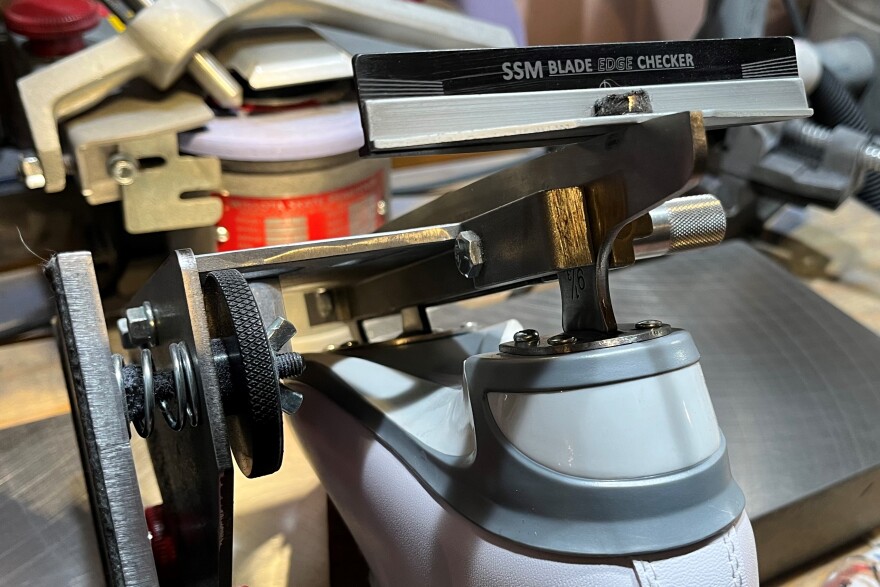Ed Nowak is the kind of tinkerer whose workshop drawers overflow with tangled cords and odd parts. But when it comes to figure skate sharpening, Nowak is a perfectionist.
"I think I'm overly fussy," Nowak says as he looks at what seems, to the casual observer, like a well-sharpened figure skate blade. Not so to Nowak. "I'm going to take one more pass," he mumbles to himself.
Nowak is a physicist by trade — he worked at IBM for decades. While he grew up casually skating, he didn't get serious about it until a decade or so ago, when he started taking figure skating lessons with his adult daughter.
When he learned his teachers would send their skates out of state to to get sharpened, he started learning how to do it himself. He officially took up blade sharpening a couple years ago as a retirement hobby, along with playing bassoon and babysitting his grandkid.

I find myself in Nowak's basement workshop on the recommendation of Martha Harding, a figure skating instructor in Chittenden County. For years, Harding says, Vermont's figure skaters had to travel to Boston or Montreal to get their skates sharpened. That's because most sports stores in the region aren't as familiar with figure skates as they are with hockey skates, since most of their customers play hockey.
Here's the deal: If you look longways down an ice skate blade, you'll see a curve. The depth of that curve is called the "radius of hollow." Generally, figure skaters prefer a shallower curve, to help them glide.

"Ice is slippery because the surface of ice is liquid," Nowak explains. "It's like water skiing. If you want to glide on the water, you want it flat."
In hockey, however, "it's all about accelerating as fast as you can and stopping as fast as you can." Hockey skaters want a deeper radius of hollow, to help them bite into the ice with their edges.

Another big difference between the two types of skates is the toe pick — the little bread knife at the top of a figure skate that's used to dig into the ice before doing jumps or spins. Sometimes hockey skate sharpeners accidentally run the toe pick through the sharpener. That's a big no.
Once Nowak assesses a pair of skates, he turns on his sharpening machine, which hails from Minnesota, and a makeshift vacuum to slurp up the metal shavings. A stone disc starts spinning. Gently, with even pressure, Nowak pulls the skate's blade across the wheel, again and again.
Next, he uses what looks like a concrete eraser to manually smooth out the burrs on the blade's edges. He drags his fingernail over each edge — if a nail shaving curls off, the blade is sharp enough.

The whole process takes about 20 minutes. His rate is $10 a pair.
Nowak gets customers from all over the state, not just Chittenden County. Last year he estimates he sharpened more than 220 pairs. This year he expects to do more than 300.
He likes the work — it keeps him busy. But at the end of the day, his favorite retirement activity is getting out on the ice himself.





